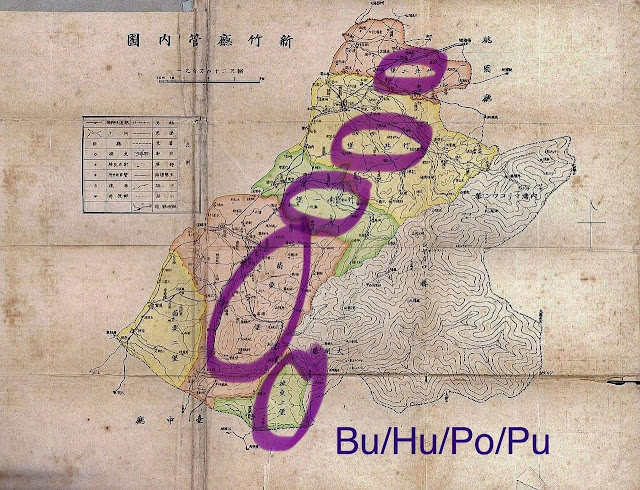Japanese or Tagalog? Formosan Language Analysis - An Eastern Taiwan Example
廣恆發商號 (Established about 1916)
The first and largest business trade in Eastern Taiwan
UPDATE 3/14/2025
Japanese preposition - no ノの
no ( preposition means of) is Japanese
copy-over from Japanese (based on 1930s)
Although it can be said that Japanese is similar to Tagalog in terms of pronunciation - Tagalog and Japanese belong to separate linguistic families.
Most people think the similarities are coincidences. Many think these words are false cognates.
I understand all these.
Formosan language analysis however in my opinion is a bit more complicated - Japanese impact on Taiwan is evident and that include indigenous Taiwanese who are considered Austronesians.
When you see a sound in Amis language (for example) similar to both Tagalog and Japanese - how can you be sure which impact it came under?
It maybe impossible to analyze and agreeable results may never be reached - I understand.
To present my point of view (out of personal interest) nevertheless - I will take one page and one place as an example - Amis in Xiaoma, Chenggong township, Taitung. 1987. Academia Sinica.
First, I would mention that the role of translators should always be taken into consideration in language analysis.
Translations which play a significant role can lead to changes in how information and context are understood, shared, and followed. Translations can also alter research ideas and directions.
TOPIC
"Ono-piyoho-a-likisi" - "Village-piyoho-the-short history"
ONO means what it means here is JAPANESE -
小野 - small field. Ōno 大野 - big field. Village
Ōno-mura, for example, was The village of Ōno in Japan.
likisi - short history. I don't know the root word or is it supposed to be a Amis word or Amis pronunciation of Mandarin? But 'kisi' 簡史 does sound in closest proximity to short-history in Mandarin/Hokkien.
'a' could be either Japanese or Tagalog - meaning 'the' 'that'. However, if ONO is Japanese, logical to think 'a' is Japanese too.
Amis-Kancifay
Saisiyat- kar karang
Saisiyat leader HayDabin 解大賓
Tagalog has a similar Crab word 'katang'.
However, there appears no history of The Crab Clan in Tagalog culture.
The Crab and Clan connection is Chinese.
and HERE. (Crab symbolism. Chinese)
An interesting explore is whether there is a connection between the two Crab-Clan, ie the most-known Saisiyat- kar karang and Amis-Kancifay. 'Hay' in HayDabin is pronounced in Hokkien/Hakka.
Others such examples shows these can be replaced with Japanese with little-to-none alterations of contexts and meanings.
The translations of these sentences appear Japanese - Chinese for passage to make sense, to be readable.
Whether Tagalog does the same job in these contexts and circumstances is not evident. And on the occasions that it appears evident - often suggested a Japanese influence.
ano (如果。 不知 that. there. umm, err, asking a question )
to (particle connecting words)
saka/masaka/ (saka translated here 就是 is an implication)
no (preposition of, to)
na (particle, part of verb or adjective) nani (where)
 |
| Indigenous Intellectual Property List (95 entry between 2017 and 2024) |
'no' meaning 'of' is JAPANESE.
Here is the question - 'no' in these contexts suggests these indigenous phrases and terms were constructed using Japanese preposition.
What is the implication in terms of 'Formosan Language' analysis? Heavily Japanese influenced? Phrases/terms were developed from Japanese original, copied from Japanese documents? Or?
There are questions.
Overall information on Formosan 'Place-Name' identifier (in particular in Shinchiku Prefecture during Japanese rules) -
鄉 hiong/hiunn
社 sia
堡 bo/hu/pu/po
such as Cin-bu. Masitoban/bon
New place-name identifier (Atayal)
Hbun-Tunan (秀鑾 ) - named after Giong` Siuˇ-lan 姜秀鑾 , (the Hakka founder of Da'ai 大隘 establishment in 1835). In Chinese 控溪部落 - 控溪 most likely is 'Giong` Siu'. Regardless of various proposed etymology.
Tentana 竹圍 - borrowed from tana (Zanthoxylum ailanthoides 刺楤)
Related read -
















Comments
Post a Comment